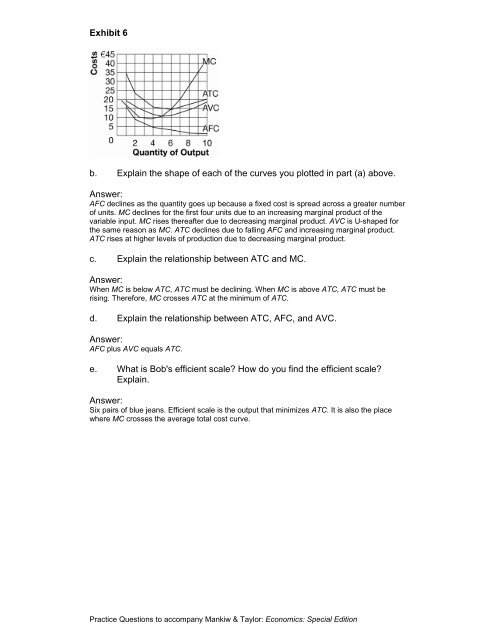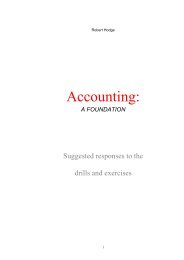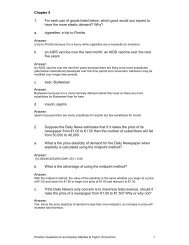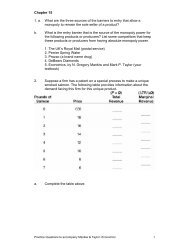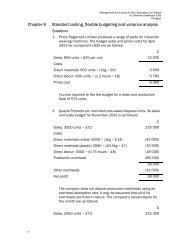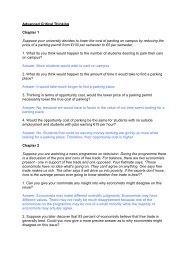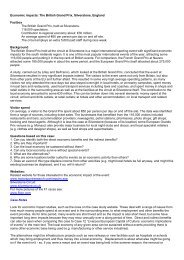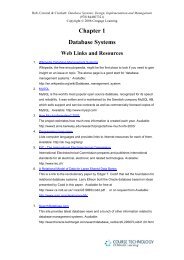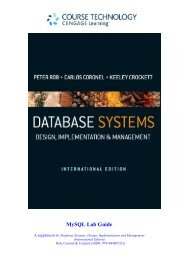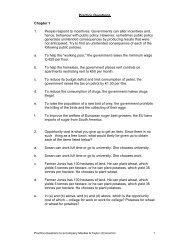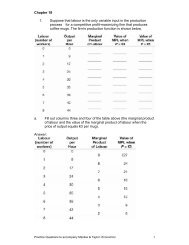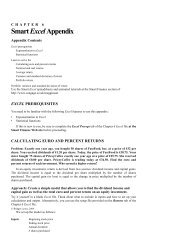Chapter 13 Questions and answers
Chapter 13 Questions and answers
Chapter 13 Questions and answers
Create successful ePaper yourself
Turn your PDF publications into a flip-book with our unique Google optimized e-Paper software.
Exhibit 6b. Explain the shape of each of the curves you plotted in part (a) above.Answer:AFC declines as the quantity goes up because a fixed cost is spread across a greater numberof units. MC declines for the first four units due to an increasing marginal product of thevariable input. MC rises thereafter due to decreasing marginal product. AVC is U-shaped forthe same reason as MC. ATC declines due to falling AFC <strong>and</strong> increasing marginal product.ATC rises at higher levels of production due to decreasing marginal product.c. Explain the relationship between ATC <strong>and</strong> MC.Answer:When MC is below ATC, ATC must be declining. When MC is above ATC, ATC must berising. Therefore, MC crosses ATC at the minimum of ATC.d. Explain the relationship between ATC, AFC, <strong>and</strong> AVC.Answer:AFC plus AVC equals ATC.e. What is Bob's efficient scale? How do you find the efficient scale?Explain.Answer:Six pairs of blue jeans. Efficient scale is the output that minimizes ATC. It is also the placewhere MC crosses the average total cost curve.Practice <strong>Questions</strong> to accompany Mankiw & Taylor: Economics: Special Edition


